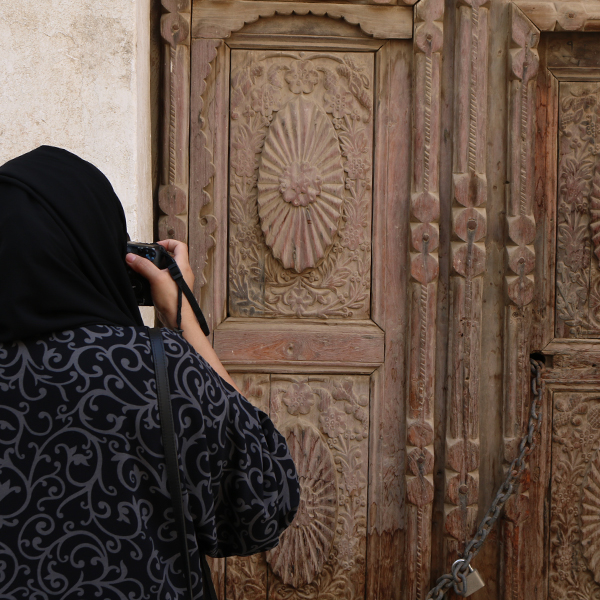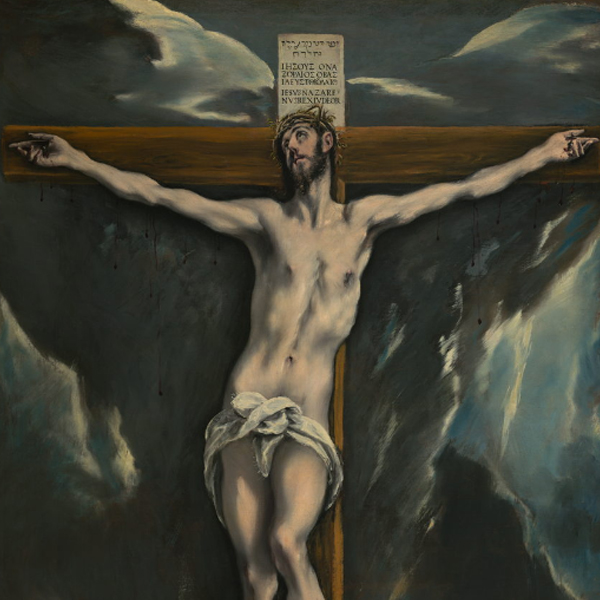The objective of the first phase was to record the sepulchre using different methods, including photogrammetry and structural white light 3D scanning. The marble is an especially complex material for photogrammetric recording as it is glossy and featureless. The resulting data will serve as a reference for the future restoration of the sepulchre, giving a precise description of its current state. The second phase involved the digital reconstruction parts of the ‘Virtues’. By recording the sepulchre and then using 3D modelling software, Factum was able to accurately reintegrate missing areas and fix cracks to create a ‘restored’ digital model, which was rematerialised as individual facsimiles.

Cardenal Tavera's marble sepulchre at the Hospital de Tavera in Toledo © Factum Foundation

Cardenal Tavera's marble sepulchre at the Hospital de Tavera in Toledo © Factum Foundation
1. Recording the sepulchre
In May 2018, a team from Factum Foundation carried out the digitisation of Cardenal Tavera’s sepulchre in Toledo. Three complementary systems were used:
-
Photogrammetry to record the sepulchre
- Over four days, a team from Factum Foundation captured over 2500 images of the sepulchre from different angles. The images were processed and prepared to generate a 3D model. The process of obtaining 3D data from image pairs is known as photogrammetry.
- The greatest difficulty of this particular recording resulted from the material qualities of the marble, as well as from the size of the sepulchre. The white, glossy marble surface challenged photogrammetry's usual efficiency. When the processing software locates common points between images, a completely white surface can appear featureless to the software.
- Two cameras were used for the recording: a 42 Mpx Sony ILCE-7RM2 and a 58 Mpx Canon 5DSR with 50 mm sigma lenses. The simplicity of the recording equipment makes photogrammetry an accessible 3D recording method providing both surface and colour information for an object.
- With this process, a valuable photographic record of the current state of the sculpture could be obtained. Once the images are processed, it will also be possible to generate a high-resolution 3D model for inspection, study or reproduction.
-
A white-light scanner to record the Virtues
- The Smartscan H5 white light scanner is a structured light triangulation scanner designed specifically for recording cultural heritage. The scanner works by projecting a series of patterns in white light onto the surface of an object and then recording and interpreting the deformation to those patterns created by the three-dimensionality of the object.
- The Smartscan H5is particularly useful when recording white marble sculptures.
- The four Virtues on the corners of the sepulchre were recorded with this scanner, producing very accurate data to complement the photogrammetry recording.
-
LiDAR (Long range recording) to record the entire space and general shape of the sepulchre
- The surface data produced with this system was not sufficiently detailed for our purposes, but the metrical accuracy of LiDAR remains helpful when scaling photogrammetry data.

© Factum Foundation

A lighting control system was used to eliminate shadows © Factum Foundation
2. Processing the 3D data
The LiDAR data was processed using Scene 7.0, a proprietary software from FARO 3D scan. The software allows the user to convert the point cloud (the raw data produced by the FARO) into a format that can be read by the photogrammetry software used at Factum Foundation: Reality Capture.

Image of the church where the sepulchre is located, processed using Capturing Reality software © Factum Foundation

Image of the church where the sepulchre is located, processed using Capturing Reality software © Factum Foundation

Image of the church where the sepulchre is located, processed using Capturing Reality software © Factum Foundation
The images for photogrammetry together with the laser dataset were processed in Reality Capture. This photogrammetry software allows the user to align data gathered with a laser scanner with 1000s of images in order to generate one, high-resolution scaled model of an object.
This powerful software extracts measured points by identifying the position of cameras and comparing each image to others that overlap with it. A great amount of overlap is needed within the images to help extract millions of points. At the end of the process a high dense triangulated mesh is generated. The final model has over 400 million polygons and must be decimated and sliced into small parts for outputting.
This resulted in a virtual model of the sepulchre for online inspection, but also a high-resolution file that can be 3D printed for future reconstruction and restoration jobs.

Point cloud obtained when the data is processed using Capturing Reality © Factum Foundation

Screenshot of the data aligned using Capturing Reality software © Factum Foundation
3. Making the facsimile
After processing the digital data into 3D models, the various sections of the sarcophagus were 3D printed or CNC-routed in resin of different density – depending on the level of detail required. The bottom structure of the sarcophagus and some details were CNC-routed in Factum, while larger parts required off-site 3D printing. The final result will be moulded and then cast in synthetic marble, which will be finished by hand.

The small 3D-printed model of the sarcophagus © Oak Taylor Smith for Factum Foundation

CNC-routing of the low relief © Oak Taylor Smith for Factum Foundation

A section of the low relief. The dark grey detail was 3D printed in Factum © Oak Taylor Smith for Factum Foundation

Juan Carlos Arias retouching the CNC-routed funerary mask of Cardinal Tavera © Oak Taylor Smith for Factum Foundation

Tests of synthetic marble cast © Oak Taylor Smith for Factum Foundation

Side by side comparison of Cardinal Tavera's funerary mask and the detail on the sarcophagus © Adam Lowe for Factum Foundation

Refining the decorative elements of the sepulchre on high-denisty polyurethane © Oak Taylor Smith for Factum Foundation

Finishing touches © Oak Taylor Smith for Factum Foundation

Factum's plaster tondi depicting the imposition of the chasuble upon St. Ildefonso (left) and three children in the arms of Charity (right) © Oak Taylor Smith for Factum Foundation

The final facsimile of the sepulchre © Oak Taylor Smith for Factum Foundation

The facsimile of the Sepulchre of Cardinal Tavera installed at Bishop Auckland © House of Hues
5. Recording and re-integrating the missing fragments
In collaboration with the Spanish Museo Nacional de Escultura and in agreement with the Spanish Ministry of Culture, Factum Foundation carried out the recording of the missing fragments from the sepulchre of Cardinal Tavera. The white marble sepulchre was damaged during the Civil War and plaster fragments from the only cast of the original have been since kept in storage within the Museo Nacional de Escultura.
The plaster casts were recorded in high resolution and will be digitally integrated into a 3D model of the sepulchre, allowing the sculpture to be seen in its most complete state since the Civil War.
For the exhibition display at the Spanish Gallery in Bishop Auckland, some of the Virtues were rematerialised individually and integrated with the missing parts gathered from the scanning of the plaster casts. This innovative display will help the viewer understand the potential of the collaboration between different institutions in applying new technologies to the conservation of cultural heritage – without ever touching the originals. A similar project was carried out on Amico Aspertini's Deposition of Christ from the façade of the Basilica of San Petronio, Bologna.

3D printed Catholic virtues; Prudence, Justice, Temperance and Fortitude © Oak Taylor Smith for Factum Foundation

Three of the four cardinal virtues: Prudence, Fortitude and Temperance in plaster © Oak Taylor Smith for Factum Foundation

One of the Virtues © Oak Taylor Smith for Factum Foundation

Detail of the facsimile restoration © Oak Taylor Smith for Factum Foundation

Two of the rematerialised and restored Virtues © Oak Taylor Smith for Factum Foundation

The facsimile of the Sepulchre of Cardinal Tavera and the Virtues installed at Bishop Auckland © Factum Foundation















































